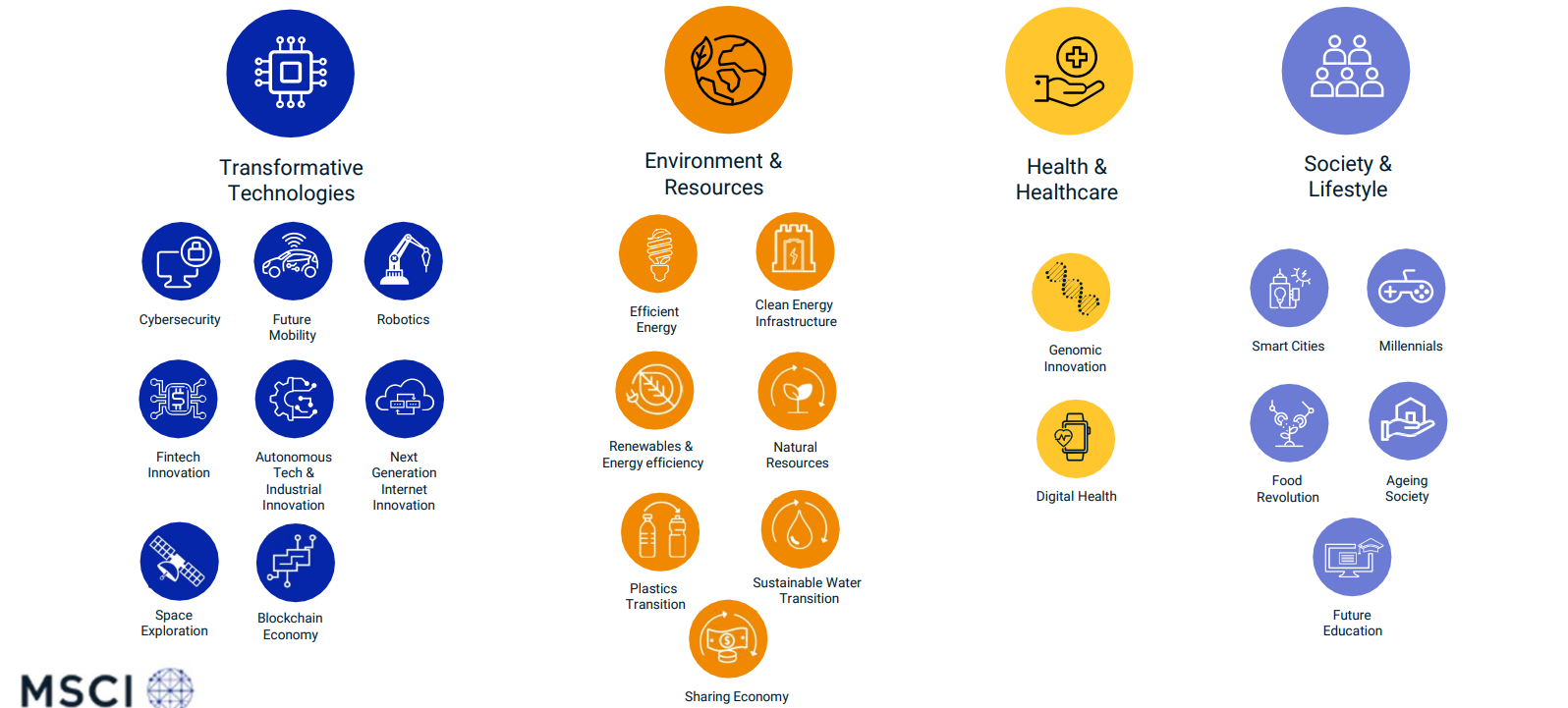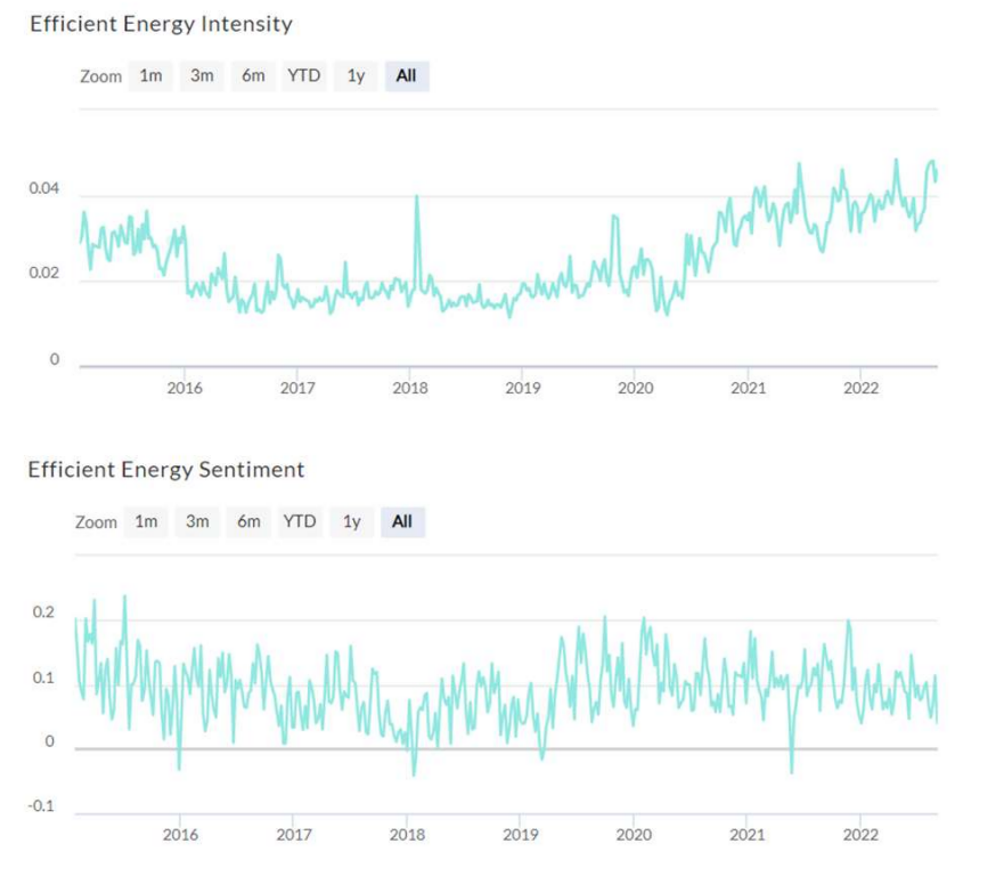While thematic ETF investors are often criticised for being fad-chasing speculators, MSCI offers a basket of disruptive future themes that intentionally rotates to capture the upside in megatrends receiving high volumes of positive media coverage.
Speaking to ETF Stream, Stephane Mattatia, global head of derivatives licencing and thematic indices at MSCI, said ETF issuers are often torn between capitalising on present-day traction and long-term viability when launching thematic products.
MSCI’s thematic rotation index, however, rotates between 22 subthemes based on news sentiment to offer investors exposure to a handful of themes in vogue while discarding those that have fallen from prominence.

“This methodology has a track record of generating alpha versus an equally weighted basket of the thematic indices,” Mattatia said. “This is because when people are excited about a theme, this tends to last a few months, which corresponds to investment momentum.”
In fact, MSCI’s theme rotation index returned almost 150% in the six years to October 2022, outperforming 16 of 21 individual themes over the period, with space being added in the interim.
In fact, only MSCI’s blockchain economy, clean energy infrastructure, cybersecurity, efficient energy and renewables and energy efficiency indices beat the thematic rotation basket.

What makes media momentum tick
Underlying the index is data from MSCI’s fintech partner MKT Media Stats, which sifts around a million media articles from 100,000 distinct sources per week.
Using natural language processing, the firm identified six million articles as theme-relevant between January 2013 and September 2021 and assigned each one a daily sentiment score for its relevant theme.
MKT then aggregates the total number of articles pertaining to each theme and provides an overall sentiment score, as well as looking at relative popularity by comparing changes in a theme’s media prevalence. This data in sum provides the basis for monthly theme momentum weightings.

Mattatia added for each sub-theme MSCI tends to trim the size of the original indices – for instance from 150 to 50 stocks – to reduce turnover at monthly and quarterly rotations. The multi-theme index also skews to developed market stocks to reduce trading costs.
“There is also a lot of room for customisation in this index methodology due to its modularity,” he continued. “Some clients tell us they only want to be exposed to rotations within one theme pillar such as technology, while others want exposure to the most popular subtheme in each of the pillars at any one time.
“We can also apply ESG filters to the baskets and control portfolio turnover in each thematic pillar and how often the overall index rotates, according to client specifications.”
In future, MSCI plans to increase the number of subthemes available for rotation, including virology and immune-oncology for healthcare.
“In five years, the potential rotation basket could grow to be 40 thematic sub-indices,” Mattatia said. “This idea is very well-received as we have already shown the sentiment rotation methodology can bring alpha and means investors are not stuck in stocks in one theme for ten years.”



